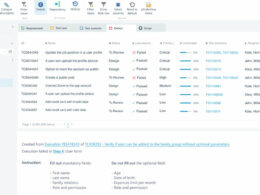How Does Data Labeling Shape Machine Learning Success?

Understanding data labeling is crucial for learning about the workings of digital media. The process involves providing descriptions, or labels, to raw data for ease of use. Data labeling makes the system robust, turning raw information into codes that algorithms can effortlessly work with and make machine-analyzing solid models.
Data labeling has become vital to machine learning programs in the modern digital era. It permits finding how algorithms work to provide invaluable insights and make the most of extensive data records. It also promotes better understanding by making handling data sets easier and helps in better decision-making.
Knowing about data labeling is crucial for understanding machine learning. This article will guide you through the significance, impact, and challenges of data labeling in machine learning. Embracing data labeling is a step forward and a massive leap in using data to drive innovation and development.
Significance of Data Labeling in Machine Learning
Identification of Components
The annotations provided in data labeling help to identify relevant features of the provided data. It encourages informed decision-making, increases prediction accuracy, and provides better outcomes for greater understanding.
Targeted Learning
Data labeling enables algorithms to distinguish between observations accurately. It helps to work on different data sets separately, promoting targeted interaction. Accurate specification is essential for the model to capture the required patterns and provide accurate predictions.
Creating Better Data Sets
The labeled data forms the basis for any ML algorithm. High-quality labeled data leads to accurate and reliable training of the given data set, increasing the learning efficiency of the models and producing better outcomes. Many data labeling services are available that can help in creating well-trained data sets.
Inspection and Validation
Annotations facilitate a thorough assessment of the performance of the ML program. The accuracy of the data can be determined and used to scrutinize the inaccurate results against the queries entered. It helps to validate the results for better performance.
Amazing Domain Knowledge
Data annotation, by its very nature, requires basic domain knowledge to label data points appropriately. This framework seamlessly integrates domain-specific knowledge in ML models and reinforces their transformation into useful information.
Bias Reduction
Data labeling also helps with discrimination and reduces training data bias. Accurately performed data annotations can be used to ensure consistency, mitigate biases, and increase the ML system’s potential.
Data Labelling Types and their Applications
In the machine learning world, there are different types of data labeling, each designed for specific tasks and data types. Here are some common data labeling types and their uses.
Regression
It provides results by continuously running through statistical data samples based on their properties, commonly used in applications such as stock price forecasting, demand forecasting, etc. Regression models make predictions using relationships between features and outcomes by research. It is essential for trend anticipation in financial markets, real estate, and trading.
Object Detection
It identifies and filters specific objects in an image or video using bounding packing containers or polygons. It finds usage in areas such as self-driving cars and scientific photography. This process involves identifying objects and describing obstacles, which facilitates accurate localization. It is essential in research, robotics, and environmental monitoring.
Semantic Classification
It assigns the corresponding class or group to each pixel in an image, providing a detailed understanding of the image content. It is used for tasks such as image segmentation and medical image analysis. In advanced research, it finds applications in remote sensing, autonomous vehicles, and biomedical image formation.
Named Entity Recognition (NER)
It identifies and classifies entities encoded in raw text data, including names, companies, and dates. This is essential for text extraction and chatbot applications. It also helps to recommend content and create better question-answer platforms.
Anomaly Detection
It marks data instances as normal or abnormal, enabling detection of deviations from expected behavior. External detectors use it to alert the user against threats or unfair data usage.
Multi Brand Classification
It assigns multiple labels or classes to a single data instance, providing detailed understanding. This is helpful in applications such as medical test materials and imaging. Unlike traditional classifiers, multi-level classifiers accommodate multiple attributes in a single model.
Data Labelling Challenges
Improvements in data labeling techniques are needed to avoid semantic ambiguity. Scalability and cost issues may arise, especially for complex data types like images or animated text. Quality assurance is an essential factor in reducing labeling errors that affect sample performance.
Addressing bias is a significant challenge to prevent inappropriate observations influenced by annotator demographics. Domain knowledge is also essential for unique data presentation. Privacy always remains a considerable concern for sensitive data, requiring strict adherence to security measures.
Other challenges include dealing with record imbalances, time trends, and pursuing continuous learning. However, these obstacles can be overcome by implementing robust methodologies, using domain expertise, and fostering collaboration. Successful management of these challenges ensures the obtaining of reliable data sets for machine learning models.
Conclusion
Ultimately, data labeling plays a critical role in the success of machine learning efforts. It catalyzes training models, providing insights and necessary context for algorithms to identify patterns and make correct predictions. Good data labeling helps you identify significant patterns, avoid mistakes, and learn over time. It also poses a few challenges, but when managed correctly, well-labeled data can become an excellent resource for machine learning. Understanding essential data labeling and ensuring it’s done right can improve machine learning in various situations.
- The Power of JavaScript’s do…while Loop in Action - May 21, 2024
- How To Boost App Downloads with Targeted Marketing - May 21, 2024
- User Interfaces Made Easy: Top Java GUI Frameworks - May 21, 2024








